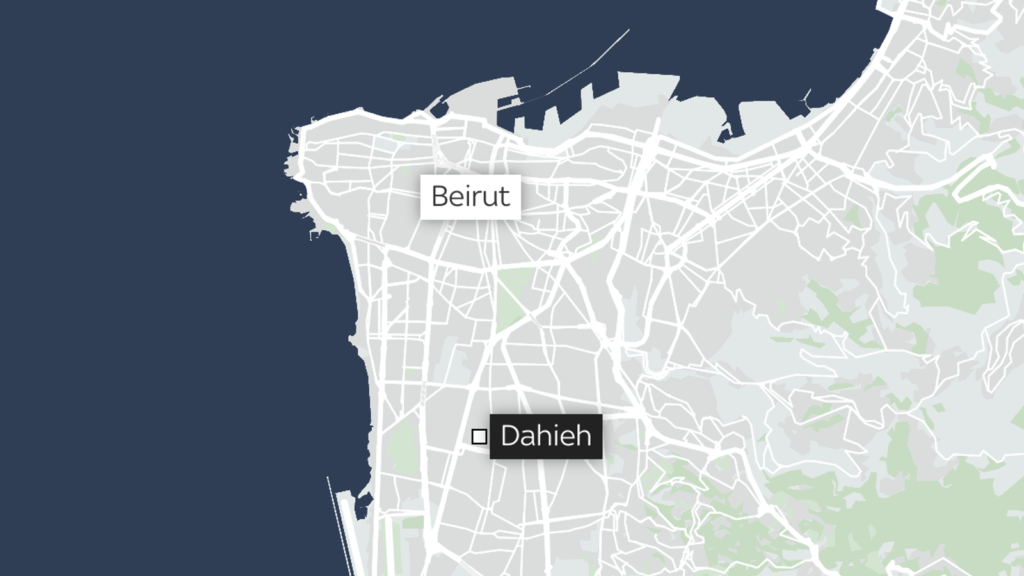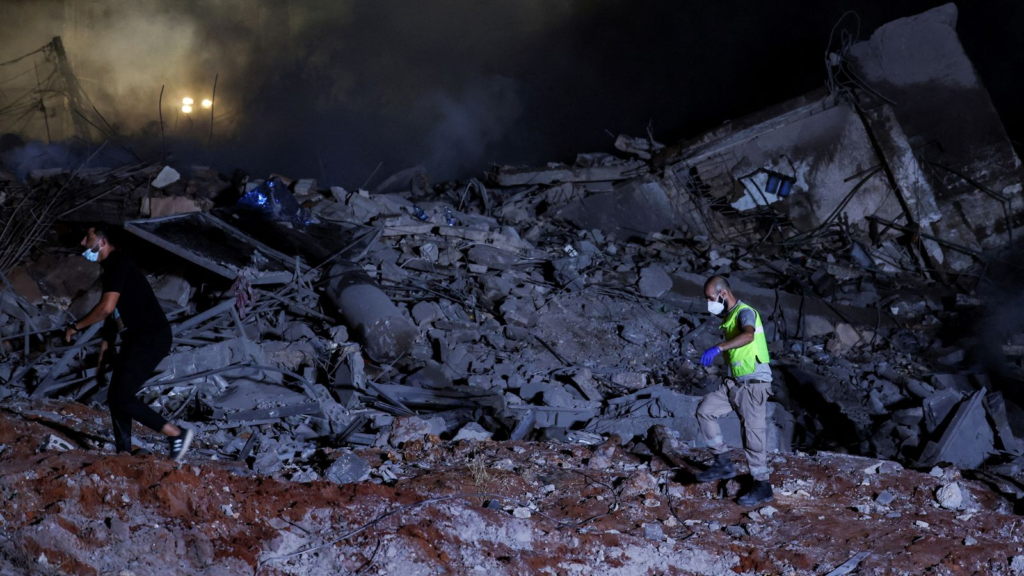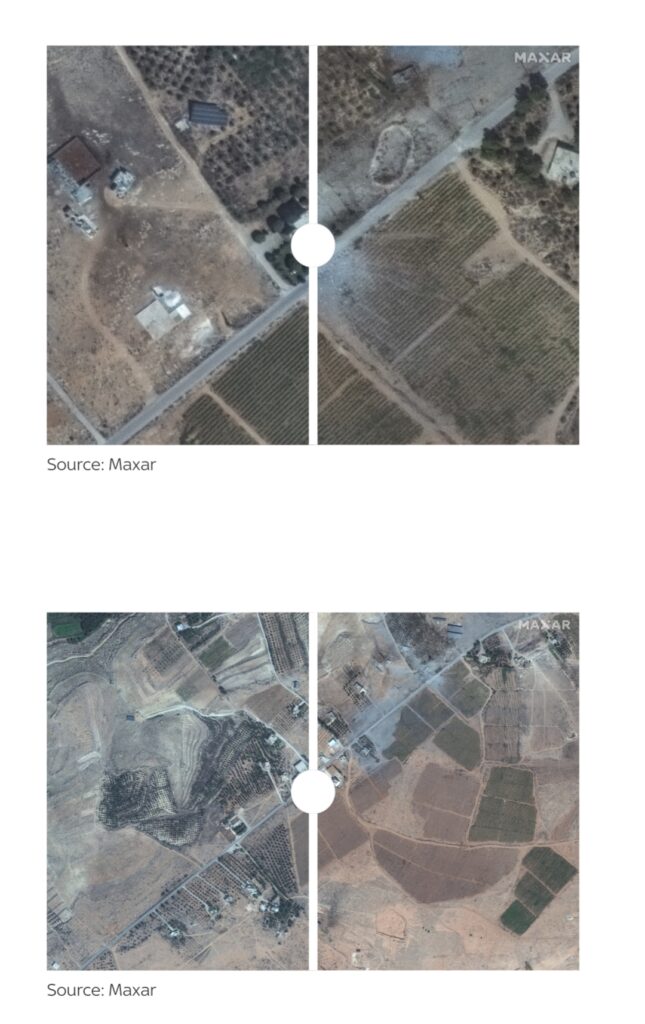At least six people have been killed in the latest airstrikes and 91 wounded, according to the Lebanese health ministry, which said the figures were preliminary.
Israel has unleashed a series of huge strikes on Beirut, with its military saying it struck the central headquarters of the militant group Hezbollah.
The first wave of attacks shook windows across the Lebanese capital and sent thick clouds of smoke billowing into the air.
Hezbollah leader Hassan Nasrallah was the intended target of the strike but a senior Israeli official said it was too early to say whether the attack was successful.
A source close to Hezbollah told Reuters that Nasrallah was still alive. Iranian news agency Tasnim also reported that he was safe.
The Lebanese health ministry said at least six people were killed and 91 wounded in the airstrikes, the figures being provisional.
A second wave of attacks by the Israeli air force followed early on Saturday. The Israeli army said the latest attacks targeted Hezbollah weapons production facilities and the militant group’s key command centre in southern Beirut.
Flames could be seen rising from some areas after the attacks.
This came hours after the IDF first called for the immediate evacuation of certain buildings in the southern suburbs. Army spokesman Avichai Adlai said in a post on X that people should stay “at least 500 meters away” from the three buildings.
During the attack, Israeli forces claimed to have killed Hezbollah’s missile force commander Mohammed Ali Ismail and his deputy Hossein Ahmed Ismail.

Friday’s attack was Israel’s most powerful in Beirut during the nearly year-long conflict with Hezbollah, which began on October 7 when the Iran-backed group emerged almost immediately after Hamas began firing rockets from Gaza. Israel.
The Israeli military claimed a “precision strike” on a Hezbollah headquarters located “among a residential area in the heart of Dahiyeh, Beirut”.
The Hezbollah-controlled southern suburb of Dahiyeh has been attacked four times in the past week, forcing an estimated 100,000 people to flee.
Four of the buildings in the area were reduced to rubble, Hezbollah’s Al-Manar TV reported on Friday.
The Iranian embassy in Beirut described the attack as a “dangerous and game-changing escalation” and said it was a “crime” that deserved “appropriate punishment.”

Earlier in the day, Israeli Prime Minister Benjamin Netanyahu announced in a speech to the UN General Assembly that Israel would continue its offensive against Iranian-backed fighters in Lebanon.
“As long as Hezbollah chooses the path of war, Israel has no other choice and has every right to eliminate this threat and allow its people to return safely to their homeland,” he said.
“Israel has tolerated this intolerable situation for almost a year. Well, I came here today to say that enough is enough,” Netanyahu added.
Israeli airstrikes have killed more than 700 people in Lebanon, raising fears of an all-out war between the two countries.
Satellite images from Maxar Technologies show the extent of the damage caused by some of the attacks in Shu’aghir, Baalbek-Hermel province, eastern Lebanon.

The first image, taken on September 3, 2024, shows a building that appears to be surrounded by trees. A second image, taken on September 26, shows the same building completely destroyed.
Israel claims the aim of the bombing was to stop Hezbollah’s shelling of its territory for more than 11 months.

